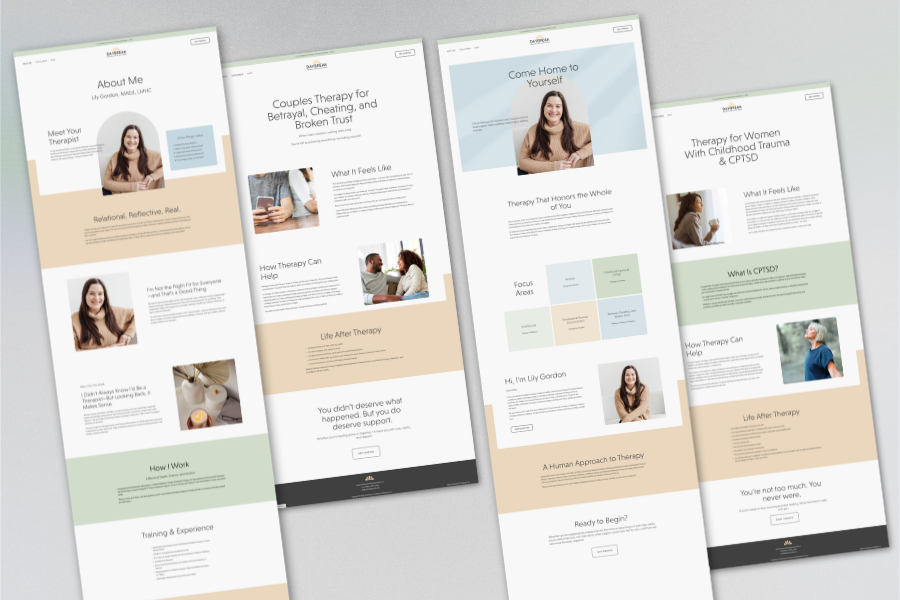Why You Are Attracting the Wrong Therapy Clients
Why You’re Attracting the Wrong Therapy Clients
Does this sound familiar?
Client: Hi, I’d like to make an appointment.
Therapist: Great! What brings you in?
Client: My dad passed away last year, and it’s been really tough.
Therapist: I’m sorry to hear that. I specialize in eating disorders—is that part of what you’re dealing with?
Client: Not really, but I’ve been anxious and struggling to eat. I saw your website and thought you could help.
Therapist: It sounds like grief is your primary concern. I can refer you to someone who focuses on that—do you have a pen?
Client: Sigh... Okay, sure.
You hang up and wonder, “Why did they call me?"
If you're a therapist, this situation might feel all too familiar. Here’s the hard truth: your website might be the problem. It could be casting too wide a net, and as a result, you’re attracting clients that aren’t quite the right fit.
But don’t worry—you’re not alone. Many therapists fall into this trap, especially in the early stages of private practice. The fear of not getting enough clients leads to vague messaging. But what if you could stop casting a wide net and boldly own your niche instead?
Let’s break down why this keeps happening and how to fix it.
1. Your Website Isn't Clear on Who You Help
Your website is like a storefront, and if your sign is vague, anyone might walk in. If you aren’t confident in your niche or your copy is too broad, clients who don’t match your specialty will show up. Being specific doesn’t limit your opportunities—it actually attracts the right ones.
Put up a clear "sign" by stating exactly who you help and why. You can check out my articles on niching if you need help defining yours.
2. Your Website Copy Isn’t Connecting
Dry, generic, or overly academic copy can confuse potential clients or leave them uninspired. Your website should feel like a conversation—clear, warm, and focused. It should speak to the client you want to work with, not just any client who stumbles upon your site.
Need help improving your website messaging? I’ve written a blog post about common mistakes therapists make—check it out here.
3. You're Attracting Almost-Right Clients
Even if your clients align with your expertise, they might not be the ideal fit for you. Maybe they’re not ready for the kind of work you do, or maybe they bring challenges that aren’t fulfilling for you.
For example, I love working with people facing health challenges, but there’s a subset who don’t want to grow and find meaning in their experience. That’s not my ideal client, and that’s okay. The key is being clear about who is the right fit so you can enjoy the work you do every day.
The Solution: Own Your Niche & Be Clear
Your website should act as a guide for potential clients. It should:
Clearly outline what you do
Set expectations
Connect deeply with your ideal clients
Gently direct others elsewhere
When I reworked my website, I made sure it emphasized values like accountability and a dedication to personal growth. This messaging attracted clients who were ready to engage fully and repelled those who weren’t aligned with my approach.
The result? I get to do the work I love, avoid burnout, and help the right people.
Final Thoughts: Be Bold About Your Niche
Don’t let fear of missing out prevent you from creating a website that truly reflects who you are as a therapist. When you own your niche and use your website as a tool to communicate it, the right clients will find their way to you—and you’ll find joy in the work you do.






























